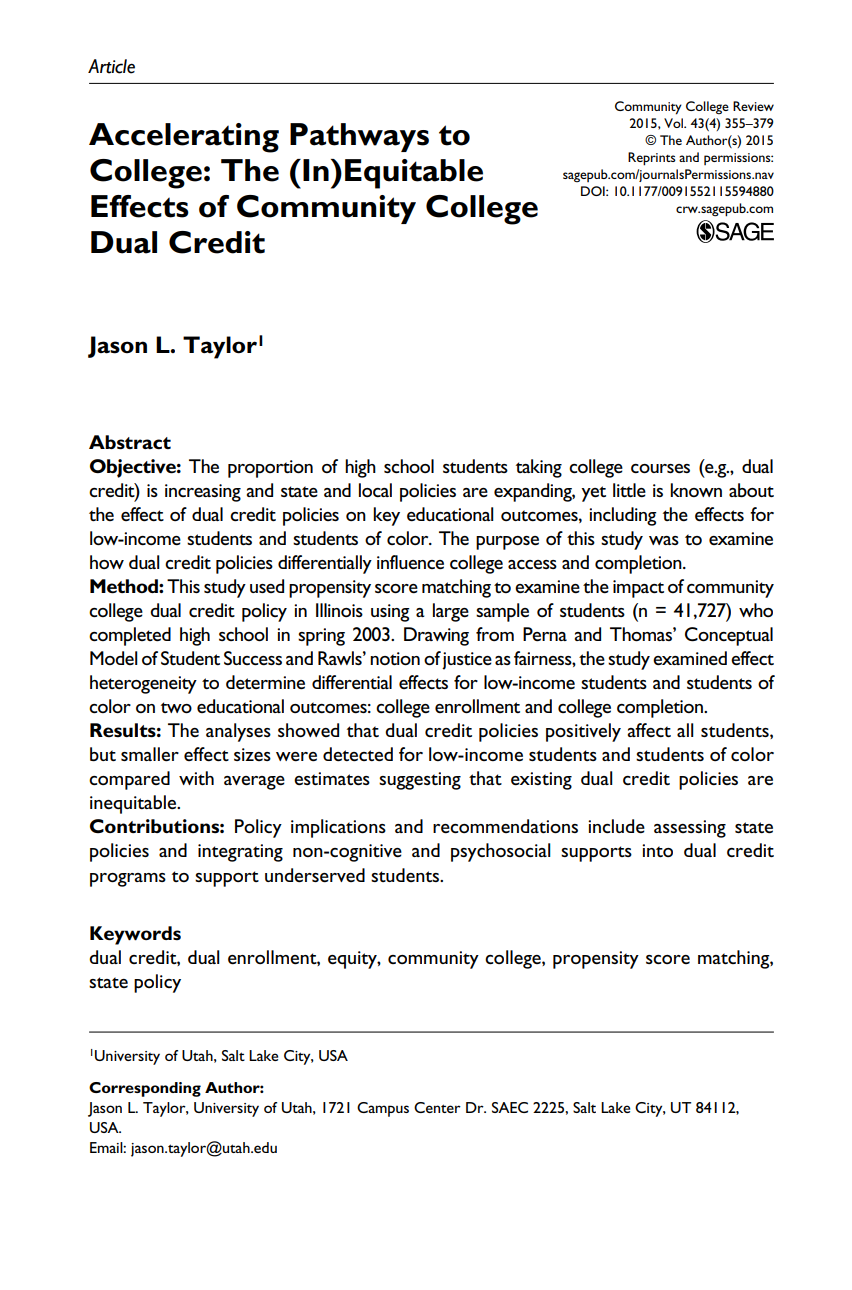Accelerating Pathways to College: The (In)Equitable Effects of Community College Dual Credit
Author(s): Jason L. Taylor
Publisher: Community College Review
Year: 2015
Access Publication*Subscription Required
Description
Objective: The proportion of high school students taking college courses (e.g., dual credit)
is increasing and state and local policies are expanding, yet little is known about
the effect of dual credit policies on key educational outcomes, including the effects
for low-income students and students of color. The purpose of this study was to examine
how dual credit policies differentially influence college access and completion.
Method: This study used propensity score matching to examine the impact of community college
dual credit policy in Illinois using a large sample of students (n = 41,727) who completed
high school in spring 2003. Drawing from Perna and Thomas’ Conceptual Model of Student
Success and Rawls’ notion of justice as fairness, the study examined effect heterogeneity
to determine differential effects for low-income students and students of color on
two educational outcomes: college enrollment and college completion.
Results: The analyses showed that dual credit policies positively affect all students, but
smaller effect sizes were detected for low-income students and students of color compared
with average estimates suggesting that existing dual credit policies are inequitable.
Contributions: Policy implications and recommendations include assessing state policies and integrating
non-cognitive and psychosocial supports into dual credit programs to support underserved
students.

